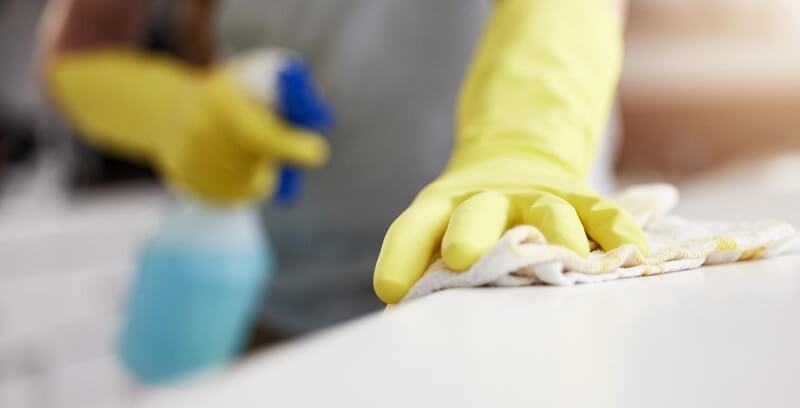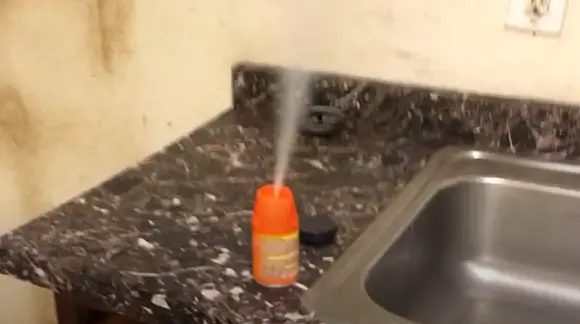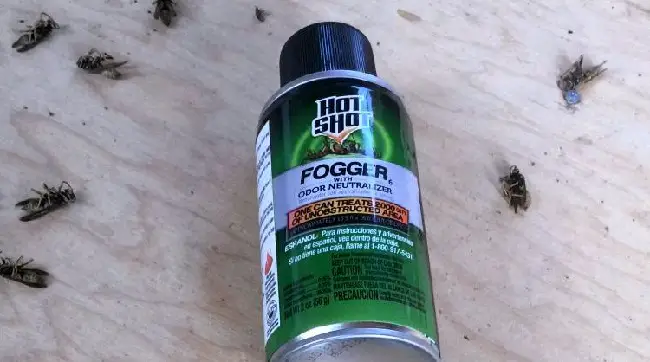How to Clean up After a Bug Bomb

Bug bombs or insect foggers have become increasingly popular as a method for dealing with severe infestations. While their efficacy might be up for debate, there’s no arguing that once used, they leave behind a residue that requires proper cleanup. Here’s a detailed guide on cleaning up after a bug bomb to ensure a safe environment for you and your loved ones.
Understanding Bug Bombs
Firstly, it’s essential to understand what a bug bomb is. It’s an aerosol propellant filled with insecticide. While many believe in their effectiveness, studies suggest that they’re about 80% effective.
They work better for flying insects like mosquitoes, wasps, and bees. Their efficiency drops significantly for crawling pests such as cockroaches and bed bugs, often pushing pests further into hiding rather than exterminating them.

Safety First
Using bug bombs with professional guidance can be safe. They are not only toxic but also flammable. Hence, before using them, ensure you follow these safety measures:
- Measure your space: To get the right size of the canister, measure the floor area of the rooms you intend to treat.
- Choose wisely: Opt for certified bug bombs, even if they’re a bit pricier, as these have undergone rigorous safety testing.
- Protect food and utensils: Ensure they are either stored away or covered securely.
- Turn off electricity and gas: Unplug appliances and turn off pilot lights to prevent accidental fires.
- Evacuate: Ensure that your home is free of pets, plants, and children for the duration specified by the bug bomb manufacturer.
Post-Bug Bomb Cleanup
Once you’ve used the bug bomb, cleaning is crucial to eliminate any harmful residues. Here’s a step-by-step process:
- Ventilation: Before you start cleaning, air out your home thoroughly. Open all doors and windows, and use electric fans to speed up the process.
- Clean All Surfaces: Clean every surface in your home with soapy water. This includes tables, countertops, and even inside closed cabinets. Multiple wipes might be necessary for optimum safety.
- Launder fabrics: Anything that can be washed, like curtains, bedding, and couch covers, should be. For items like cushions that might not be regularly laundered, consider getting professional cleaning help or advice from local upholstery stores.
- Clean the kitchen: Given the toxicity of pesticides, it’s better to be safe than sorry. Wash all your utensils, cookware, and other kitchen items to ensure they’re free from residue.
- Floor Cleanup: Start by vacuuming the floors. This will eliminate the residue and any dead pests or their eggs. Once done, mop the floors with soapy water, repeating the process for added assurance.

What If You Get Exposed?
If you or someone in your household experiences symptoms like nausea, dizziness, burning eyes, or wheezing after the treatment, it might be due to exposure to the bug bomb’s insecticides. Immediate medical attention is recommended.
Do Bug Bombs Affect Clothing?
While bug bombs may not damage clothing directly, they can deposit chemicals on fabrics. If these contaminated clothes are worn, they can lead to skin irritation or other health issues. Always launder clothes exposed to bug bombs before wearing them to ensure any residual chemicals are removed.
Is Bug Bomb Safe for Babies?
Bug bombs are potentially harmful, especially to vulnerable populations like babies. The chemicals in these products can lead to respiratory problems, skin irritation, and other health concerns. Keeping babies and other sensitive individuals away from treated areas until thoroughly ventilated and cleaned is crucial.
Can I Bug Bomb My Car?
You can use bug bombs in cars but with caution. Ensure the product is designed for smaller spaces. After treatment, thorough ventilation and cleaning are paramount to prevent inhaling any lingering chemicals. Always follow the product’s guidelines for safe and effective use.
Can You Bomb a Storage Unit for Bed Bugs?
Bed bug bombs can be used in storage units, but their efficacy is debated. Bed bugs can hide in places where the fog might not reach. If you choose to use one, combining it with other treatment methods is beneficial. Always follow safety guidelines when using these products.
Can I Bug Bomb My Crawl Space?
It’s not advisable to bug bomb a crawl space. Chemical residue can penetrate the floor, potentially contaminating living spaces. The confined nature of crawl spaces can also pose ventilation issues. Alternative pest control methods are recommended for these areas.
Do Bug Bombs Set Off Smoke Detectors?
There’s a possibility that bug bombs can trigger smoke detectors. The dense aerosol can be mistaken by detectors as smoke. To prevent false alarms, consider disabling or covering detectors during the treatment, and remember to reactivate or uncover them afterward.
Do Bug Bombs Kill Earwigs?
While bug bombs can target earwigs, these insects are fast and may evade the treatment. The effectiveness of a bug bomb increases when combined with other control methods. It’s always recommended to assess the extent of the infestation and consult pest control experts if needed.
Will a Bug Bomb Kill Termites?
Although bug bombs can kill some surface termites, they aren’t effective against an entire infestation. Termites often reside deep within wood structures, where bug bombs can’t reach. For termite infestations, specialized treatments are typically required.
Do Bug Bombs Kill Wasps?
Bug bombs can effectively kill wasps in a sealed environment. However, it’s essential to ensure that the treated space remains sealed during the process to prevent the escape of any wasps. After treatment, proper ventilation is crucial before reoccupying the area.
Conclusion
While bug bombs can offer a solution in pest management, they come with their set of challenges. Cleaning up post-application is crucial to ensure the safety of your living environment. If the pest problem persists, consider opting for professional services like Go-Forth Pest Control in North Carolina.
They provide efficient pest control and ensure the methods used are environmentally safe. Remember, the goal is not just to eliminate pests but to do so in a way that keeps your home safe and comfortable.